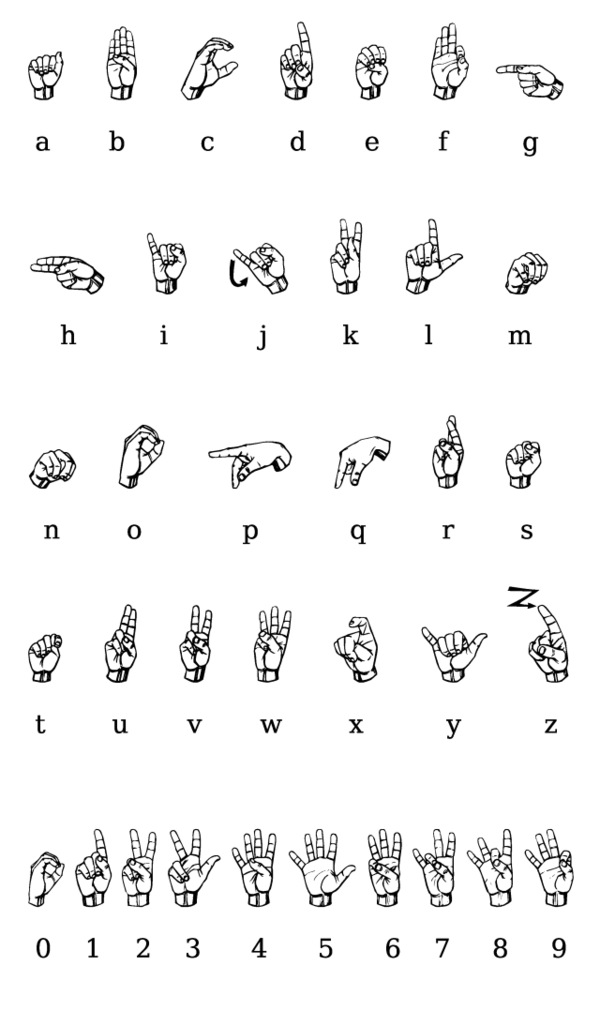Difference between revisions of "AY Honors/Sign Language/Answer Key"
(→Chart) |
|||
| (One intermediate revision by the same user not shown) | |||
| Line 3: | Line 3: | ||
==Chart== | ==Chart== | ||
[[Image:Asl_alphabet_gallaudet.png|600 px]] | [[Image:Asl_alphabet_gallaudet.png|600 px]] | ||
| − | |||
==Use for sign languages other than ASL== | ==Use for sign languages other than ASL== | ||
| Line 16: | Line 15: | ||
==See also== | ==See also== | ||
| − | *[[Fingerspelling]] | + | |
| + | == *[[Fingerspelling]] ==' | ||
[[Category:Sign languages]] | [[Category:Sign languages]] | ||
Revision as of 23:10, 23 May 2006
The American Sign Language Alphabet is a manual alphabet that augments the vocabulary of American Sign Language when spelling individual letters of a word is the preferred or only option, such as with proper names or the titles of works. Letters should be signed with the dominant hand and in most cases, with palm facing the viewer.
Chart
Use for sign languages other than ASL
The ASL alphabet is based on an old Spanish manual alphabet that dates back to at least the 17th century.
It is used with minor modification in Paraguay, the Philippines, Thailand, Malaysia, Hong Kong, Taiwan, and Singapore. The Asian countries just listed modify the T, for the ASL T is considered obscene. Instead, they use the T of the Irish manual alphabet, which is like an ASL X, but with the thumb tucked into the index finger (that is, the index finger wraps around the tip of the thumb). In Thailand, one indicates points on the left hand for the tone and vowel marks of the Thai alphabet, and aspiration is not indicated. The Paraguay alphabet is identical to ASL, except for the addition of the letter Ñ, which is an N swiveled at the wrist so that the fingers move side to side, and the letters LL and RR, which are L and R plus movement to the side.
It is also used in Germany, Austria, Norway, and Finland, again with a modification for the letter T. T is like G with the thumb placed atop the first knuckle of the index finger.
German Ä, Ö, Ü, and ß are signed like A, O, U, and S but with a downward motion, while SCH is a 5 hand (palm forward). In Norwegian and Finnish, the letters Ä, Å, Ö, Ø are derived by moving A and O (in the case of Å, in a small window-washing circular motion), and it is the Æ that gets the 5 hand (perhaps somewhat flexed).
See also
== *Fingerspelling =='

